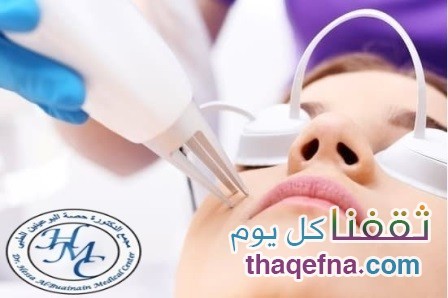Fading Scars with laser Treatment , Laser treatment can feel like a magic spell when it comes to fading scars, whether surgical or acne scars. However, medical laser is a two edged weapon. It must be done by a professional medical practitioner to get the impressive results aimed for, and keep the risk of possible side effects at bay. If you are considering laser therapy to remove scars, you must be aware of these following basic facts first:
How Laser Therapy Works to Fade Scars?
The effect of laser treatment is more focused on making the scars look and feel less noticeable, rather than make them disappear completely. To understand how this process happens, we need to know first how your body deals with a wound.

The healing process of a wound is initiated by the body upon the offset of an injury. A scab gets developed over the wound to protect it from external factors, after the repairing process is completed the scab eventually falls off leaving a scar tissue beneath it. In some cases the scar tissue is soft and looks similar to the texture and color of the rest of the skin, but in other cases particularly if the wound is deep enough, the scar tissue developed might look different to the rest of the skin permanently.
Fading Scars with laser Treatment
In such cases laser treatment can be needed to gently remove the outer layer of the scar tissue. The affected area undergoes several sessions of laser treatment to smoothen out the texture and appearance of the scar. The laser energy used also helps to penetrate skin surface to induce the production of new skin cells and improve circulation in the area..
Procedure and Steps of laser Therapy for Scar Removal
Laser treatment to remove scars is an outpatient procedure that does not require anesthesia. However, some topical anesthetic creams may be applied beforehand to ease the mild discomfort you might experience during the process..
There are different forms of Laser Treatment to remove scars. Your Dermatologist will be able to determine the best approach for your case; the possible options include the following:
Ablative or laser resurfacing
This form of Laser treatment for scars is effective in improving the appearance of surgical scars, warts, wrinkles and fine lines. The technique focuses to remove the outer layer of the scar tissue gently and over time, that surface layer generally consists of damaged skin cells compiled, in the process Carbon Dioxide (CO2) Laser can be used for deeper scars, or erbium laser for shallow scars.
Fractionated laser resurfacing
Fractionated laser is especially beneficial for those suffering from pigmented scars, the laser beam penetrates deeper to surface skin layers and stimulates the production of collagen to improve appearance and texture, while balancing the responsible factors for pigmentation (melanin).
Non-ablative laser resurfacing
Infrared heat lasers beam is aimed at the affected area for an extended period of time, it reaches inner layers of the skin and stimulates the production of collagen and cell renewal. This helps to remove damaged cells and smoothens out the appearance of the scar.
What are the Possible Side Effects?
Since laser treatment uses light and heat to resurface the outer layer of the scar, some mild side effects might be experienced, which includes the following:
- Redness.
- Burning sensation.
- Swelling.
- Bleeding.
- Itching.
- Scaling.
- Shedding.
- Scarring.
- Pain.
Mild side effects should subside within a few days after each session. However, if you start noticing signs of infections, such as, increased redness, sensitivity or pain call your doctor as soon as possible. Other signs of skin infection include: the formation of an abscess filled with pus near the site of the procedure.
What can you expect after Each Session?
The length of the recovery time may vary depending on the technique used in the treatment and the case itself. In general it may take up to 10 days for the skin to heal; your doctor will prescribe aftercare instructions that include the following:
Apply a cold pack on the area to prevent swelling.
Avoid getting exposed to direct sunlight for six weeks after the procedure.
Apply the prescribed moisturizers regularly.
Avoid applying harsh chemical products or cosmetics for a few days.
Conclusion
Laser treatment is the most effective and least invasive approach to remove scars for good; results are usually long-lasting. However, you may need to undergo another session in the future.
The best result is not always instant; it may take up to a few weeks to months in order to notice the needed difference.
You can contact us via the following link

التعليقات